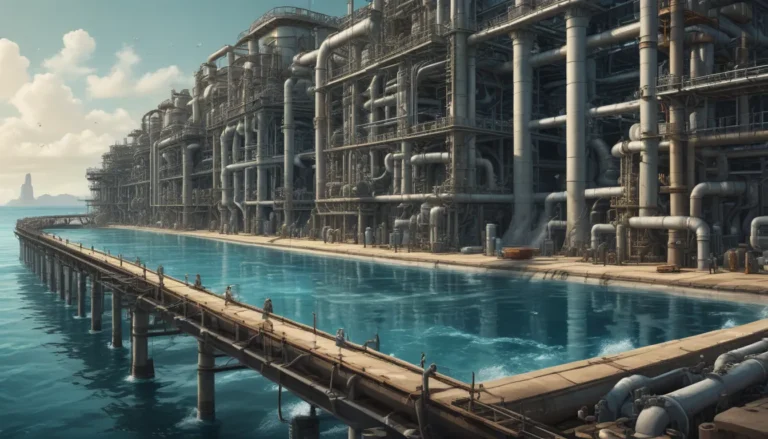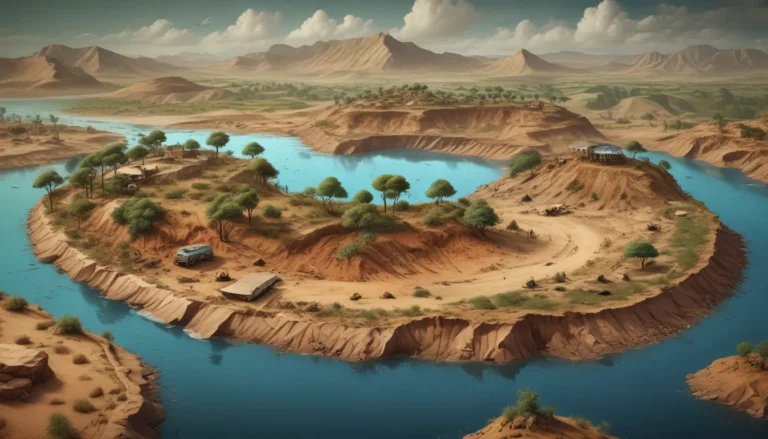A Note About Images: The images used in our articles are for illustration purposes only and may not exactly match the content. They are meant to engage readers, but the text should be relied upon for accurate information.
In our ever-changing world, ecological restoration stands as a beacon of hope for repairing and rejuvenating our damaged ecosystems. This intricate field combines scientific knowledge, innovative techniques, and a profound connection to nature to reverse the impacts of human activities on the environment. As society shifts towards a greater awareness of the need to conserve biodiversity and protect our planet, ecological restoration takes center stage in the global movement towards sustainability.
Embracing Ecological Restoration: A Path to Renewal
Ecological restoration is a scientific process that seeks to restore the natural balance of ecosystems by repairing and renewing damaged or degraded environments. Through the reintroduction of native species, removal of invasive species, habitat restoration, and enhancement of ecosystem functions, this practice aims to bring back the vitality and resilience of our natural world.
The Benefits of Ecological Restoration: A Multifaceted Approach
- Mitigating Climate Change: Restoring natural habitats can assist in capturing and storing carbon dioxide from the atmosphere, aiding in the reduction of greenhouse gas emissions and combating global warming.
- Enhancing Biodiversity: By creating healthy habitats and providing favorable conditions for native species, ecological restoration projects contribute to the revival of diverse populations of plants, animals, and microorganisms.
- Beyond Natural Areas: Ecological restoration extends beyond forests and wetlands to encompass urban and agricultural landscapes, fostering sustainable practices in diverse environments.
- Community Engagement: Successful restoration efforts rely on community involvement, creating a sense of ownership and fostering long-term commitment to restored ecosystems.
- Economic Opportunities: Ecological restoration not only benefits the environment but also offers economic advantages through employment opportunities, eco-tourism, and property value enhancement.
- Long-Term Monitoring: The ongoing nature of ecological restoration demands continuous monitoring and adaptive management to evaluate effectiveness and ensure the success of restoration actions.
- Species Conservation: By restoring habitats for endangered species, ecological restoration plays a critical role in preventing species extinction and fostering population recovery.
- Cultural Significance: For indigenous communities, ecological restoration holds deep cultural and spiritual importance, reconnecting them with traditional lands and practices.
- Disaster Risk Reduction: Healthy ecosystems act as natural buffers against natural disasters, reducing the impact of events such as hurricanes and tsunamis on human settlements.
- Ecosystem Services: Ecological restoration enhances ecosystem services vital for human well-being, supporting processes such as clean air, clean water, and pollination.
- Global Responsibility: Ecological restoration transcends borders, reflecting a shared responsibility to safeguard the health and integrity of our planet.
- Political and Financial Support: To achieve large-scale restoration, political will and financial investment are essential to address environmental challenges and secure the future of our ecosystems.
The Journey of Ecological Restoration: A Collective Endeavor
Embarking on the path of ecological restoration signifies a commitment to healing and rejuvenating our planet. Each restoration project contributes to the collective effort of preserving and protecting our natural heritage for future generations. As we navigate environmental challenges, embracing the significance of ecological restoration paves the way for a healthier and more resilient planet.
Frequently Asked Questions
- What is ecological restoration?
Ecological restoration involves renewing and rebuilding damaged ecosystems to restore their ecological integrity and functionality. - Why is ecological restoration important?
Ecological restoration is crucial for repairing and enhancing ecosystems, promoting biodiversity, improving water quality, and mitigating climate change impacts. - How does ecological restoration work?
Activities such as habitat reconstruction, reforestation, native species reintroduction, invasive species control, and monitoring are key components of ecological restoration. - Who is responsible for ecological restoration?
Ecological restoration is a collaborative effort involving scientists, conservationists, government agencies, local communities, and individuals working together to protect and restore our natural environments. - Can ecological restoration bring back extinct species?
While ecological restoration focuses on restoring ecosystems to their natural state, it can create conditions for the reintroduction and recovery of endangered species. - How long does ecological restoration take?
The timeline for restoration projects varies based on scale and complexity, ranging from a few years to several decades or longer. - What are the challenges of ecological restoration?
Challenges include invasive species, limited resources, public awareness, and the need for long-term monitoring and maintenance. - How can individuals contribute to ecological restoration?
Supporting organizations, participating in volunteer projects, practicing sustainable land use, and advocating for environmental protection are ways individuals can contribute to ecological restoration.
Supporting Authenticity and Quality
At the core of our commitment lies the delivery of trustworthy and engaging content. Each fact on our site is contributed by real users, ensuring a diverse wealth of insights and information. Our dedicated editors meticulously review submissions to uphold the highest standards of accuracy and reliability, guaranteeing that the facts we share are not only captivating but also credible. Trust in our dedication to quality and authenticity as we explore and learn together.
In conclusion, ecological restoration is a transformative journey towards sustainability, offering hope for the revitalization of our ecosystems and the protection of our natural heritage. By understanding its benefits and supporting initiatives, we can collectively contribute to creating a healthier and more resilient planet for generations to come. Join us on this inspiring voyage towards a greener and more sustainable future.






